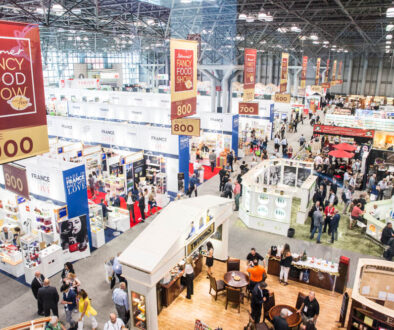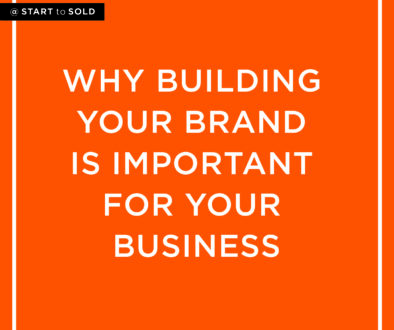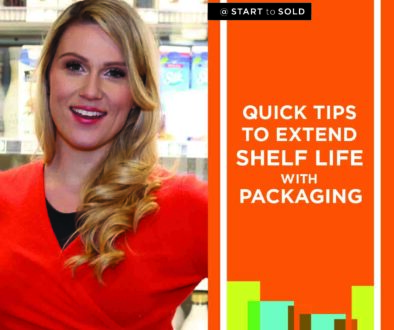8 Easy Steps To Design RTD Can Beverage Packaging
8 Easy Steps To Design Canned Beverage Packaging
Do you have an idea for a new beverage, and you want to know how to design your packaging? Here we will cover the 8 steps you need to take your beverage from an idea to getting it into something that you can sell in stores.
1. Find A Contract Manufacturer
So first, you need to talk to your manufacturer and determine their packaging capabilities to understand the options you have for your product. Keep in mind that a contract manufacturer (CM) is a factory and they run specific systems in order to make money and keep the QA high. They will already have certain sizes and volumes of cans or bottles they produce. For example can they produce an eight ounce slim can, a 16 ounce large can or a 24 ounce Tall Boy? Often the fastest way to get going is to work within their existing packaging styles and work with their packaging manufacturers.
2. Pick Your Structural Packaging
Once you understand what your factory can use, pick which type of packaging will fit your brand and appeal to your target audience. Be sure to think about the things like the BODY, LID and TAB of the individual can unit, as well as the folding carton box or tray it will go into. For the next steps of the process you will want to write down the product specifications, packaging manufacturer and attach pictures so you can email everyone from now on about your desired packaging and eliminate any potential miscommunications.
3. Get A Quote
Now that you have selected your can, email your packaging company and ask for a quote by including the structural specifications, pictures and any information about artwork and finishes you have. You should include your desired quantities and if you’re a small startup you can ask them their minimum order quantity (MOQ) if you are trying to do this on a budget.
There are companies like Crown and Ball, two of the largest American can manufacturers. There are other smaller manufacturers if you cannot afford to work with the big guys, because they do not offer credit to startups. Another option is to work through a broker like Berlin that can help you manage minimum order quantities. You can reach out to us for contact information if you need help finding someone to run your packaging: http://pearlresourcing.net and info@pearlresourcing.net.
4. Inspect Structural Samples
You’re going to want to get samples sent to yourself, as well as to your factory that will manufacture the product. You will need to make sure that they can handle and use the packaging you’re ordering and sign off on it.
For example in canned packaging, the lid and base are shipped in two separate pieces and (INSERT PHOTO) your contract manufacturer (CM) will actually have to seal them in the manufacturing process. Once you’ve confirmed that this is the can you want and your factory has confirmed that they can use it, you are ready for the next step.
5. Design Artwork
Next you will request the packaging dieline and begin your artwork. A dieline is basically a digital file (as a PDF or an AI) that shows you the flat printable area of the can that you’re going to make. It’s called a “dieline” when it’s unprinted, and you basically add your graphic design on top of this as a layer which makes it your “packaging artwork.”
Once you’re done, designing your artwork, you’re probably going to want to talk to your packaging company and see what types of print finishes they allow and the possible upcharges. Are there special color callouts you wish to request as a Pantone? Do you want glossy, do you want matte? Do you want embossing or gold foil? Any weird features might adjust your price, so you need to get that final price and then add a note or layer to your artwork.
With the final artwork and the layers for the print finishes, you’re able to re-send it to your packaging company and finalize the quote and costs.
8 Easy Steps To Design RTD Can Beverage Packaging
6. Place Purchase Order
Next you must place the purchase order for the desired quantity and transfer payment! This is the exciting part of the process because your idea is real! The moment the money leaves your account, you know you’re in it to win it. Your PO will need to include the quantity ordered, the item code or technical specs the packaging company sent with the quote, possibly include the quote or estimate number, delivery location or if it is a pick-up project and the artwork file name for printing. In the email with the PO attached the final artwork for print.
Don’t forget to double check that you include the small things like “matte” or “glossy” print finishes OR “printed pink tab” to clarify anything unique in the color or features of your packaging that you might have discussed via email. It should be on the order so no one will forget.
7. Approve Printed and Digital Proofs
Once your printer has the PO and artwork they will send you a “digital print proof.” It’s as simple as looking at the artwork and placing your signature on it but I have two pieces of seasoned hard earned advice:
- Print off the artwork this last time and make it lifesize to be able to see errors in sizing, color and placement.
- Be sure to have multiple people double check it’s accuracy on things like UPC codes, nutritional or weight claims and spelling of your website.
The tiny things we take for granted can easily be missed by the designer or yourself and it’s YOUR JOB as the business owner to be sure multiple people help you get it right. If you sign off on it and no one caught an error, you will have tons of cans with errors that are hard to fix later. You can’t blame anyone else but yourself if something gets missed. You can’t expect anyone else to catch it if you didn’t so recruit as many people as possible to help in this oddly difficult part of the process. If you don’t know what things could go wrong, you can get a packaging artwork download off of our website (INSERT LINK TO DOWNLOAD) and use it EVERY SINGLE TIME you do a packaging design project to help reduce errors.
Once the digital print proof is complete, they will send you the “physical print proof” with the artwork on the can exactly how it will be once mass produced. There should be no errors at this point, but this is your last chance to catch any if they exist before your order is fulfilled. It’s also your last chance to see what the actual colors are going to look like on this material. Most people don’t realize that when you design something on a computer, that the colors that you see on that screen are not going to look the same when you print something on a box, or on tin or glass. You want to really be aware of what the colors and the design are going to look like on the material that you’re planning to print it on.
8. Go To Print!
When you have taken steps #1-7 and approve your samples, you have to sign off on it, and mail it back to the can printing company and say, “I’m ready to go, pull the trigger!” This is the exciting last step which is telling them you’re ready to go to print. At this point they will start manufacturing your packaging.
What they’ll end up printing and shipping is a can that is empty, the base and the lid, shipped separately to your contract manufacturer (CM). The factory will out that packaging on their mechanized production line, fill it with product, tamp down the lid and now you’ve got a canned beverage ready to drink!
CONCLUSION:
I hope these 8 steps help you to figure out very quickly how to go from START TO SOLD with your idea for a printed can packaging design.
If you have any questions please leave them in the comments below. You’re also welcome to leave a link to your beverage company that you’re about to launch, or that you currently have. I’d love to go take a look and see what’s out there and get inspired by what you’re doing!
CLICK TO WATCH CASE STUDY:
CLICK TO SUBSCRIBE TO START TO SOLD: https://bit.ly/3cDZS39
MORE ABOUT START TO SOLD
Whether it’s packaging, product development, brand design, marketing, manufacturing, distribution, or operations and logistics, you’ll get the in-depth, relevant and actionable advice and resources you need, here at the Start to Sold Blog OR on YouTube: https://bit.ly/3cDZS39
MORE ABOUT EMILY PAGE
Emily is CEO of Pearl Resourcing and has managed and launched multiple 7-figure brands in Costco, Williams-Sonoma, Kroger, and Amazon. She’s bringing you the expertise, resources, and mentors you need so that you can develop products and make them sell.
http://instagram.com/EmilyAnnePage /
#starttosold #emilyannepage #entrepreneuradvice #beveragepackaging #cannedpackagingdesign #foodandbeverageindustry #RTDpackagingdesign #packagingdesign #howtodesignbeveragepackaging #canpackaging #berlin #crown #ball #beveragemanufacturing


